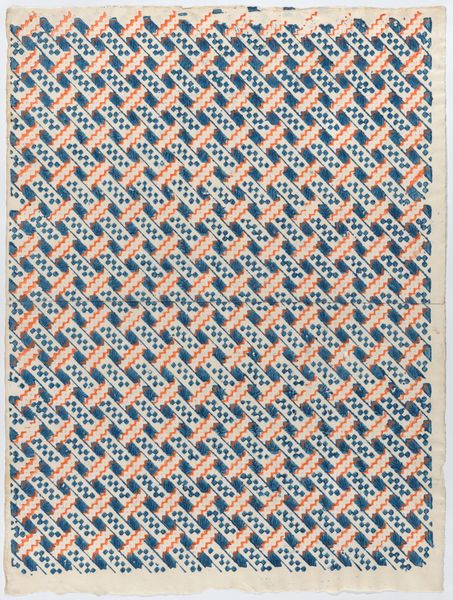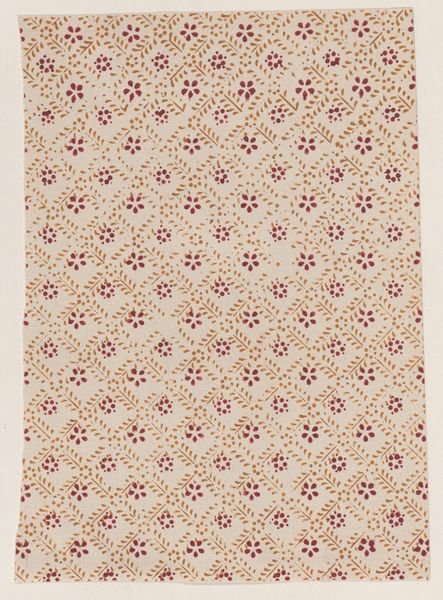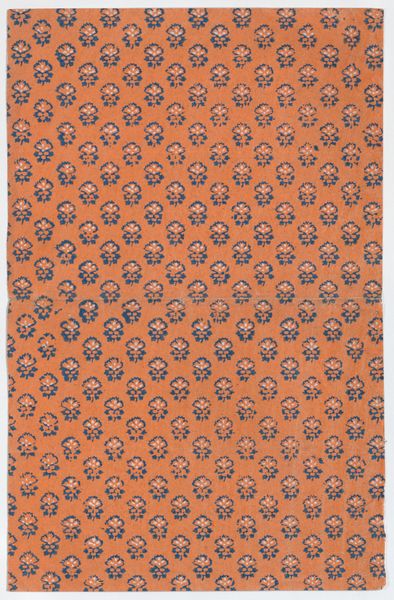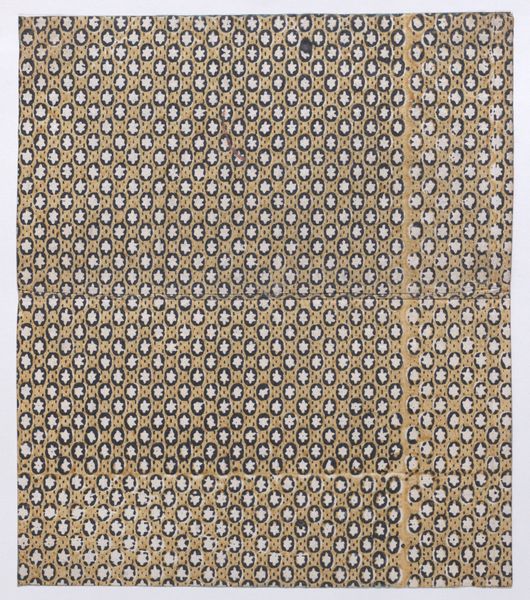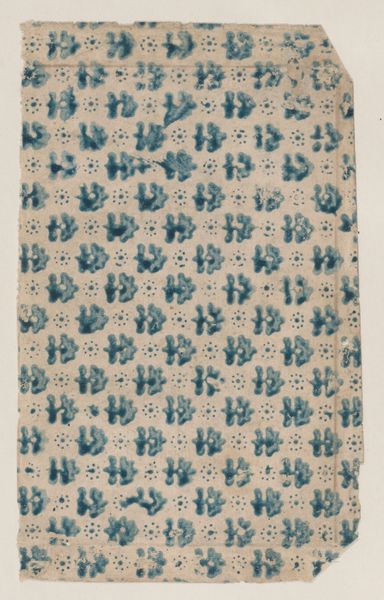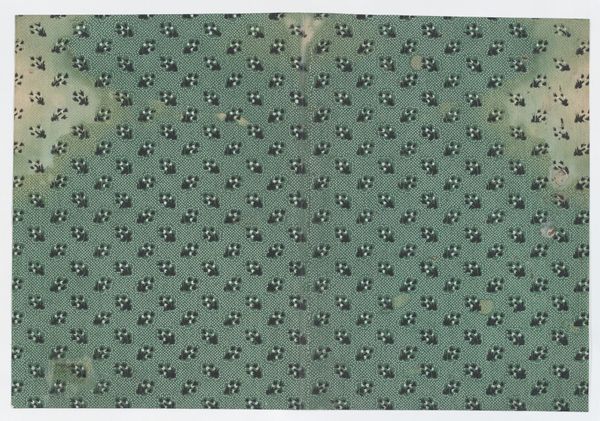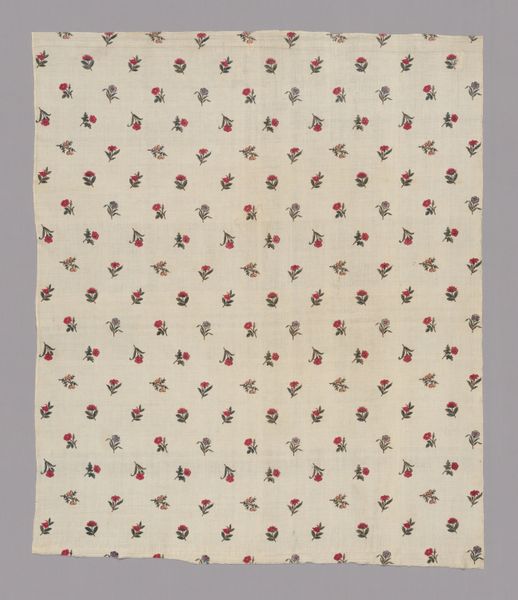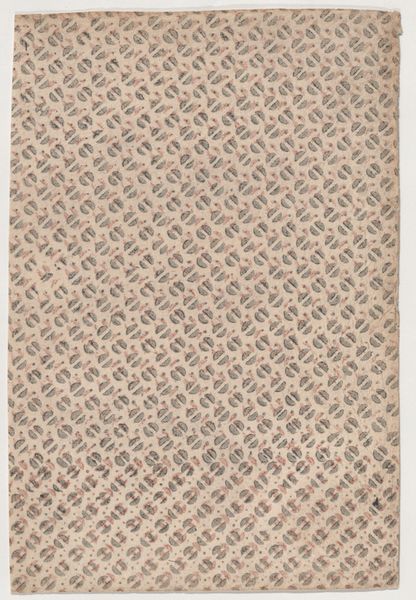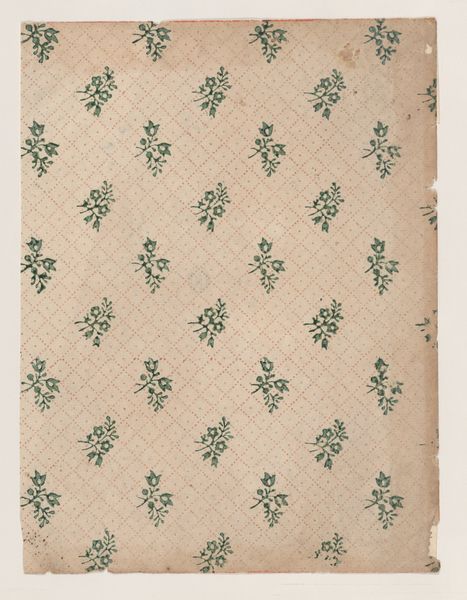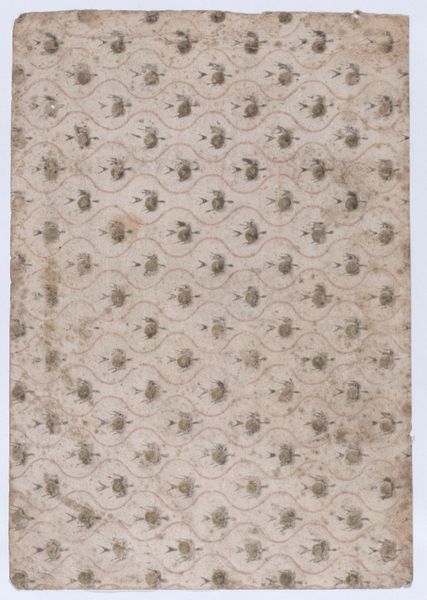
print, paper
# print
#
paper
#
pattern design
#
repetitive shape and pattern
#
organic pattern
#
repetition of pattern
#
vertical pattern
#
regular pattern
#
pattern repetition
#
decorative-art
#
layered pattern
#
funky pattern
#
combined pattern
Dimensions: Sheet: 12 9/16 × 17 5/16 in. (31.9 × 44 cm)
Copyright: Public Domain
Curator: Here we have an intriguing book cover design from the 19th century. The museum attributes it to an anonymous maker. It utilizes print and drawing on paper to create an overall pattern of leaves. What are your initial thoughts? Editor: It's rather calming, in a somewhat regimented way. The repetition of the leaf motif, and the muted color palette of ochre, red, and black, has an almost meditative quality. It reminds me of some vintage wallpaper. Curator: Absolutely. As a repeating design meant for a book cover, its creation likely involved techniques like woodblock printing, perhaps alongside hand-drawn elements to individualize each impression. Imagine the labour involved in producing these en masse for the bookbinding trade of the time. Editor: The leaves themselves – and I'm not botanically precise here – evoke a feeling of harvest, perhaps the late autumn. They almost have a feeling of shedding and preparation, which might fit symbolically with the text held inside. Perhaps it’s a tale of romance gone stale, the cover reflecting the content in metaphor. Curator: An interesting reading. It is precisely within this context of book production and material circulation that we might uncover its deeper meanings. What sorts of dyes were used? Was this particular type of pattern more common for religious texts or pulp novels, etc. Editor: It raises so many questions! Is the anonymous artist alluding to concepts of change and transition using autumnal symbols? It begs for answers in art history. Curator: I agree, and what an enigma it presents us, especially if the means and makers disappear with time. And consider, perhaps it was "just" a simple commercial work made under certain, increasingly standardized conditions to serve basic demands of production, distribution, and function. Editor: Both things can be true at the same time, of course! This cover acts as a potent reminder of nature's cycle even while representing an element of early industrialized production, a paradox caught within a single object. Curator: Well said! Examining these covers gives one a material sense of our forebearers daily encounters through repetitive form, while its iconography whispers echoes that vibrate through time.
Comments
No comments
Be the first to comment and join the conversation on the ultimate creative platform.

